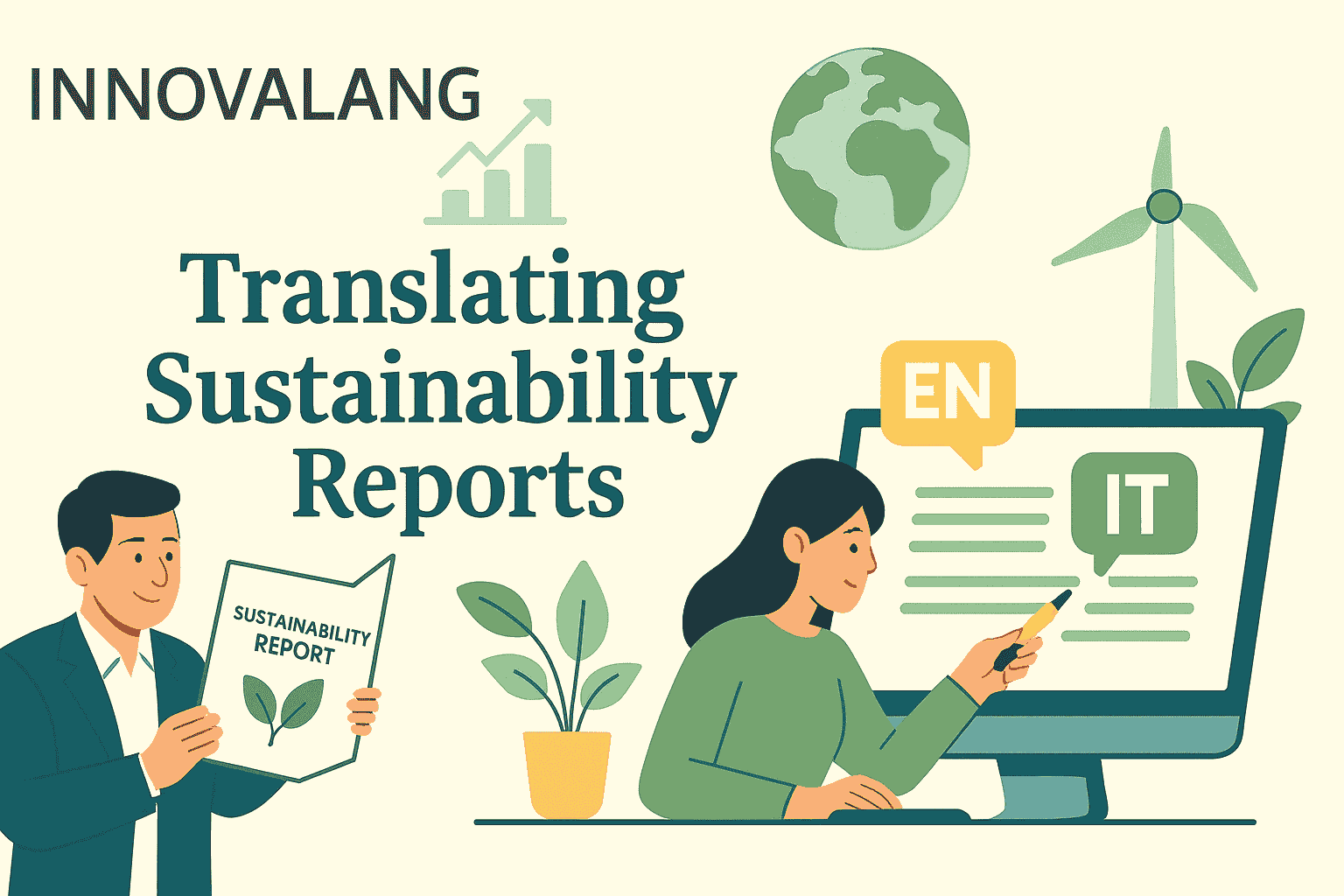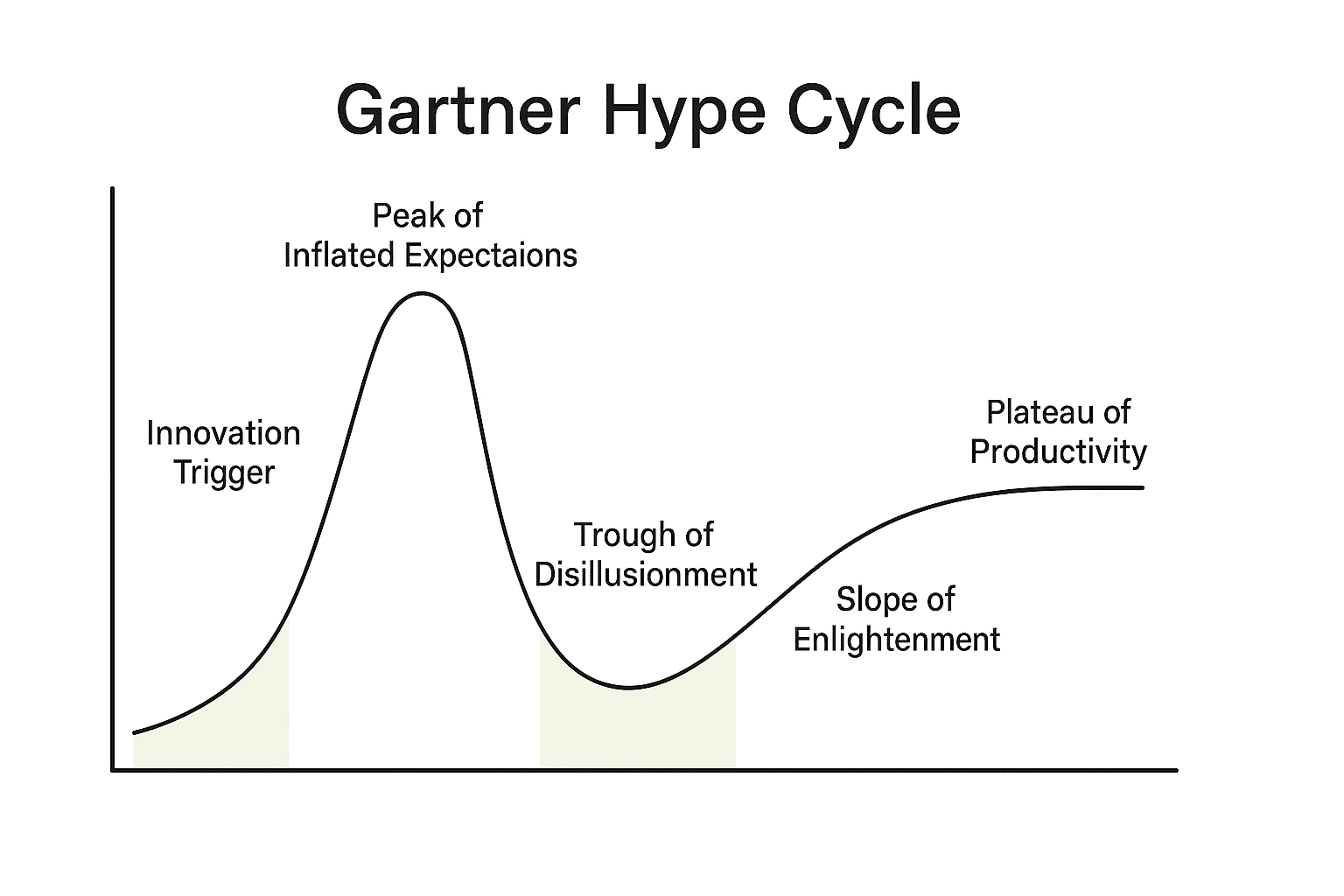For some years now, there has been a debate within our sector about how to define companies like ours: translation agency, language service provider (LSP), language service company (LSC), or other variations.
What might seem at first glance to outsiders as a trivial exercise in style actually responds to a real need to identify “what we do” and how we intend to differentiate ourselves from other players in the so-called Language Industry, and therefore, how we present ourselves externally.
However, the message that comes across can be somewhat unclear: after all, if I present InnovaLang as a translation agency, the potential client/user/market understands that we deal with translating texts from one language to another—a starting point from which they can inquire further, such as which languages we handle (in our case, all of them!) and which sectors we cover (again, in our case… all of them!).
Even better, from certain perspectives, if I present InnovaLang as a translation agency in Turin, Cagliari, and Sardinia, since geographical proximity in the eyes of the average user can be perceived as an added value.
That said, the question naturally arises: what reasons have led some companies in the sector to seek new names?
The answer lies in an assumption that doesn’t always coincide with a communication need. Communication, being bidirectional, requires that the sender’s intentions align as closely as possible with the recipient’s perceptions to be effective. This means the potential client/user/market should understand the added value of turning to one translation agency over another or why it better suits their needs to work with a translation agency rather than individual translators.
The message that terms like “Language Service Provider / Language Service Company” intend to convey is that of being a reference hub for managing translations (to a greater or lesser extent in terms of services provided and languages covered). This involves and implies the presence of project managers who can handle the client’s workflows, assigning texts and types of processing to the professionals (translators, revisors, proofreaders) best suited for specific tasks. They are, in turn, supported by vendor managers who, upstream, select the most appropriate translators, revisors, and proofreaders for the contexts and language combinations needed at any given time.
Essentially, the aim with terms like “Language Service Provider / Language Service Company” is to differentiate from possible confusion with individual translators and/or small translation agencies, as they represent a “service hub” and not merely “operators or sellers” of translations.
Structured agencies can relieve the client/user of non-trivial tasks, such as selecting and managing appropriate resources across multiple languages, while also providing quality controls through structured processes and revisors selected and managed by both project and vendor management, which are necessary conditions for being considered actual companies in the Language Industry.
However, these theoretical assumptions do not always meet the “real world,” where the recipient of the message “Language Service Provider / Language Service Company” does not quite understand what we want to convey with this rather sophisticated but, to many, obscure name…
And the effectiveness in terms of comprehension, and consequently in commercial and marketing terms, fades.
Regarding the InnovaLang brand, born in 2011 as a blend of “Innovation in Languages” and “Language of Innovation,” given our base of expertise and our core business in patents and technical-scientific language, it was initially associated with the slogan “We Speak European.”
Nice, but it was not impactful and did not communicate what we do, so we replaced it, as part of our general rebranding in 2019, with the bilingual slogan “Ci occupiamo di traduzioni” and “We do translation,” to be clear and transparent about our work, starting from the logo.
Now, in 2024, we have enriched this slogan by modifying it to “AI – Language Services – Translation,” given the additional range of services launched this year, still centered around languages in a broad sense.
Now, based on the reflections mentioned earlier, which would lead to seeking a balance between the straightforward concept of “Translations” and the broader one of “Language Services Center,” we theoretically still lack something to differentiate ourselves from individual translators and small translation agencies, as a “service hub” rather than merely “operators or sellers” of translations, as mentioned earlier.
We have decided to work on this internally, shaping over the years a corporate culture that is aware of not “selling translations,” but rather solving communication and linguistic problems.
This may seem like a subtlety to some, or an obvious concept to others, but it is not: our clients notice it when they request a quote, and our project managers do not merely provide timelines and costs.
Since we don’t sell translations but solve communication problems, our task as professionals in applied linguistics and communication is to understand the real needs of the client, who, dealing with a completely different sector, in the vast majority of cases needs professional advice that will guide them to the best and most satisfying solution—often a solution far removed from what they initially considered as the only option, where they find better quality and value.
Let me explain with a couple of examples.
When IKEA began, a few decades ago, on the journey that led it to conquer the world, it faced very high costs, even for the giant it aimed to become. Its product range, which quickly expanded from dozens to hundreds, and then thousands of items, often required different assembly instructions for each product, each to be translated into dozens of languages.
At this point, IKEA was fortunate to encounter communication consultants rather than mere translation sellers, who solved the problem by cutting costs and generating savings that are certainly quantifiable in millions of euros today: why not simplify the assembly instructions by presenting them as a “silent comic” (infographic) that illustrates all the steps and components by identifying them solely with letters and numbers?
This is certainly an excellent case study as a “best practice” in communication, as well as full alignment with the company’s policy of simplifying all processes, freeing up a budget to allocate to marketing (translations for magazines, panels, advertising) that might not have had the same impact otherwise.
The “IKEA case” is extreme but paradigmatic of the value that professional consulting like that provided by InnovaLang offers its clients.
A second example, which is quite common in the best practices implemented daily at InnovaLang, involves the “standard” client who requests a quote for translating a given text, assuming that their needs regarding language services stop at the sequence of quote > order > translation.
Our Project Managers do not merely provide a quote for timelines and costs but first ask—when possible, opening a direct communication channel to demonstrate and practice the attention we have for the client—what the objective is that they intend to achieve with that text.
Suppose the client produces perfumes that they sell mainly in France and the USA and wants to target Arabic, Russian, and Portuguese-speaking markets.
Currently, they have a website only in Italian, English, French, German, and Spanish versions, which they want to update, and they plan to add Arabic, Russian, and Portuguese versions.
Our staff will conduct a free superficial analysis of the existing translations, summarizing them for the client, and then asking whether:
- the German and Spanish-speaking markets are actually a commercial target;
- whether the UK is an objective or a present market;
- whether the Portuguese language is intended for Portugal or Brazil, and performing a text analysis to check for internal repetitions of terms and phrases.
Now, suppose—and this is not a far-fetched hypothesis—that:
- the German and Spanish-speaking markets are not actually a commercial target, and those versions exist only because “it’s better to have all the main European languages”;
- the UK is not a market, nor an interesting objective;
- the target market for Portuguese is only Brazil;
- the text submitted for the quote has an internal repetition rate of 20%.
Based on these analyses, it is reasonable to assume:
- a significant saving from cutting the German and Spanish versions;
- updating the English version to American English;
- translating into Portuguese in the Brazilian Portuguese variant;
- a substantial discount on repetitions (which we significantly discount).
So, in the end, between cutting unnecessary languages and discounting repetitions, the client could end up with a cost that is 40-50% lower than what a “standard” quote would have anticipated, with a much better communication outcome suited to the target market, with all the resulting benefits in terms of image and commercial success.
This is what we mean at InnovaLang with “We do translation” and “Language Services – Translation,” while continuing to identify ourselves also with the label “Translation Agency”!
Article by Federico Perotto






